Welcome to the third and final part of my Salalah 2018 series. Over the course of three posts, we’ve explored the mountains, natural springs, beaches and cliff-sides of Salalah. We’ve also looked at the unique birdlife of the region, which is a mixed bag of African and Asian species.
Keeping those aside for now, do you know what put Salalah on the map? Not its beaches. Mountains and wildlife? Nope, not those either. What made Salalah the international tourism destination that it is today is probably not what you think it is..

Sumhuram was initially built as a defensive outpost for the kingdom of Hadhramaut at the end of the first century BC. However, as sea trade rose and the kingdom’s financial and political pressures grew, Sumhuram was converted into a city with an aim to control the coast and engage in trade with the other participants of the infamous ‘Incense trade route’.
The Incense trade route was a network of major trading posts that connected Mediterranean posts to parts of north Africa and Asia and was used to trade exotic spices, jewellery, silk, and incense. The main product of trade in Sumhuram was Frankincense, an aromatic tree resin used in the production of perfumes and incense. Due to the high global demand for Frankincense, Dhofar, being the main producer of this high quality incense in the region, saw a major boost to its economy. Sumhuram’s success resulted in Salalah being termed ‘The Land of Frankincense’, a title which the locals take a lot of pride in upkeeping.
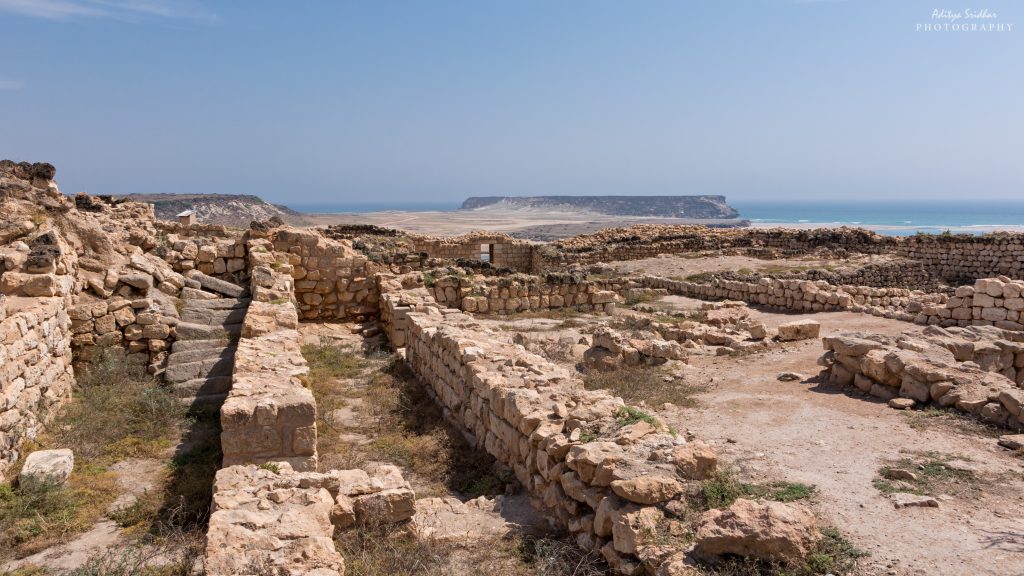
Moving away from the ruins of Sumhuram, let’s go off-shore to look at another one of Salalah’s well-known tourist attractions, dolphin watching. Salalah’s coasts are famous for their high density of marine life, with the most observable species being the Indo-Pacific Humpback dolphins.
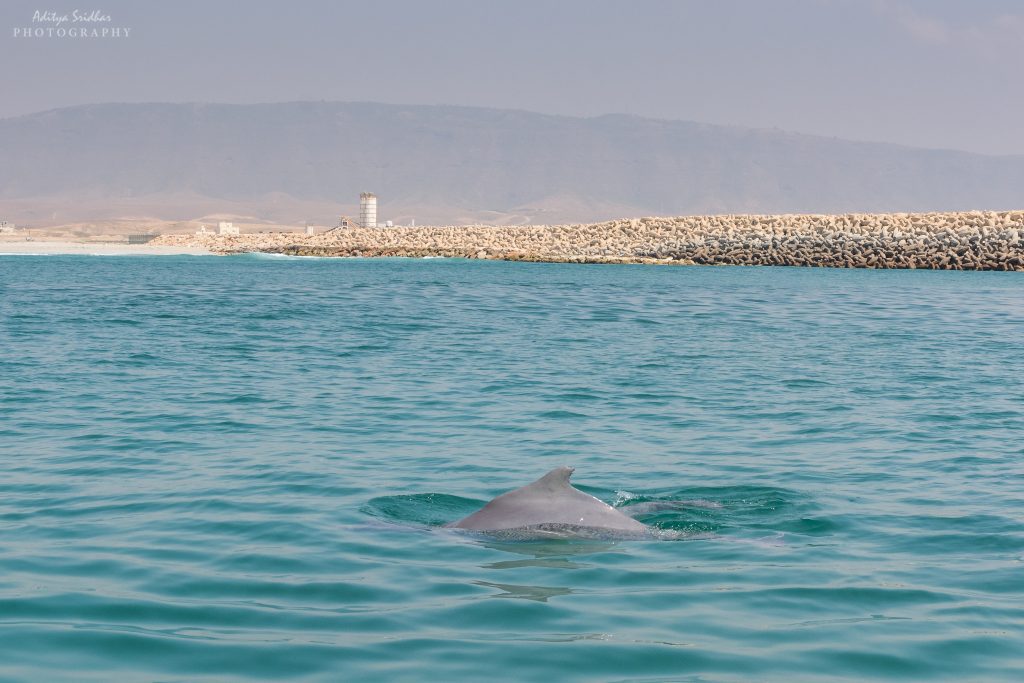
I was initially skeptical about the odds of actually spotting any dolphins since it had only been a week since Tropical Cyclone Luban hit the region. However, as we moved away from the shore, the first signs of aquatic life showed up in the forms of sting rays and jellyfish. Heading into deeper waters, my tour operator took us to a spot where the dolphins are commonly sighted and, sure enough, a pod of dolphins showed up seemingly out of nowhere.
We spent a couple of hours tracking the dolphins, learning about their behaviour and watching the pod interact among themselves, before heading back to shore. It was truly a once-in-a-lifetime experience watching these beautiful creatures outside of zoos and living in their natural habitat – the way it should be. Nature is best enjoyed free and wild, not when kept captive and tame.
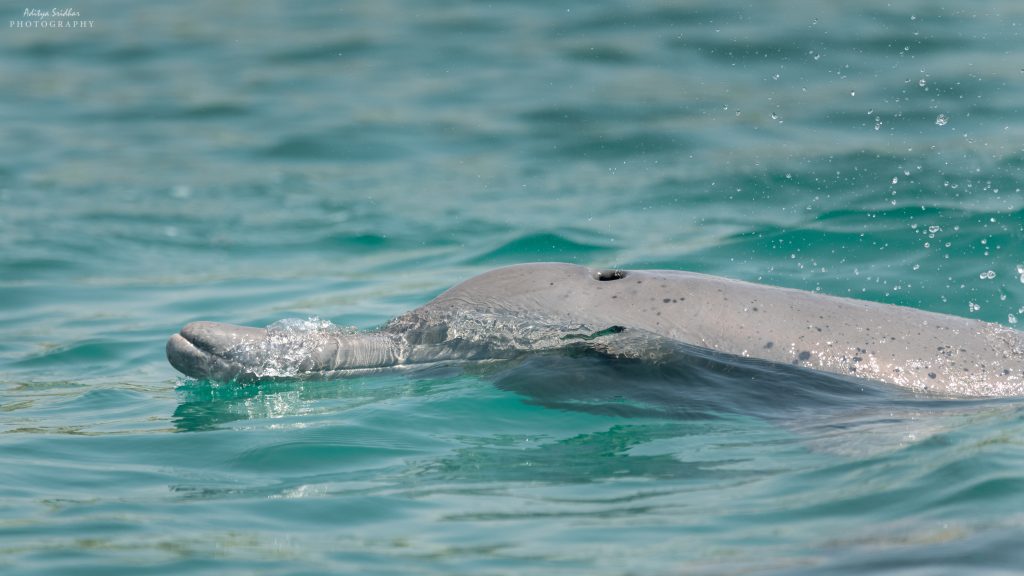
A point to note, as a birdwatcher, is to make the most of every opportunity to photograph a species in a different environment. While I was on the boat, a large flock of Sooty Gulls flew against the shoreline. The image that I made showcases the three geological elements that can be found in Salalah – dry, mountainous African terrain, pristine white beaches, and the teal-blue Arabian Sea.
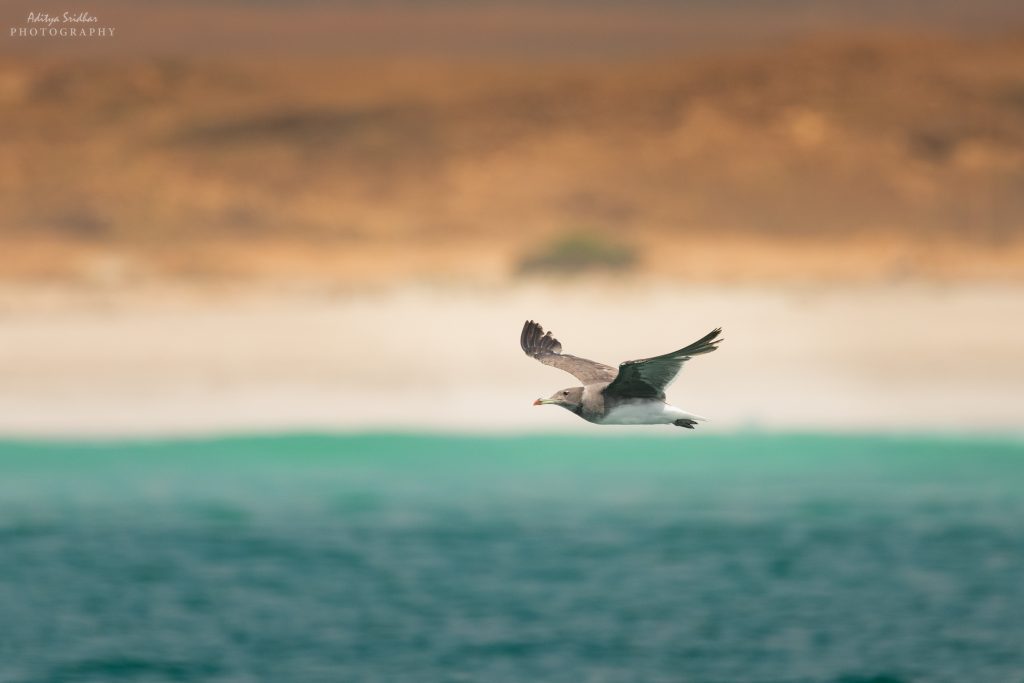
Right after I took the shot of the Sooty Gull, I heard the call of a Sandwich Tern behind me. Being familiar with this skittish species, I knew that I only had a few seconds to focus on the bird and capture an image. I snapped my head in the direction of the sound and shot a few burst shots before the bird flew out of frame. The resulting image had a detail that I always look for when photographing sea birds – breaking waves. It is important to stay alert to different photographic opportunities, because if I had gotten too involved in capturing the image of the Gull, I would’ve missed the shot below.
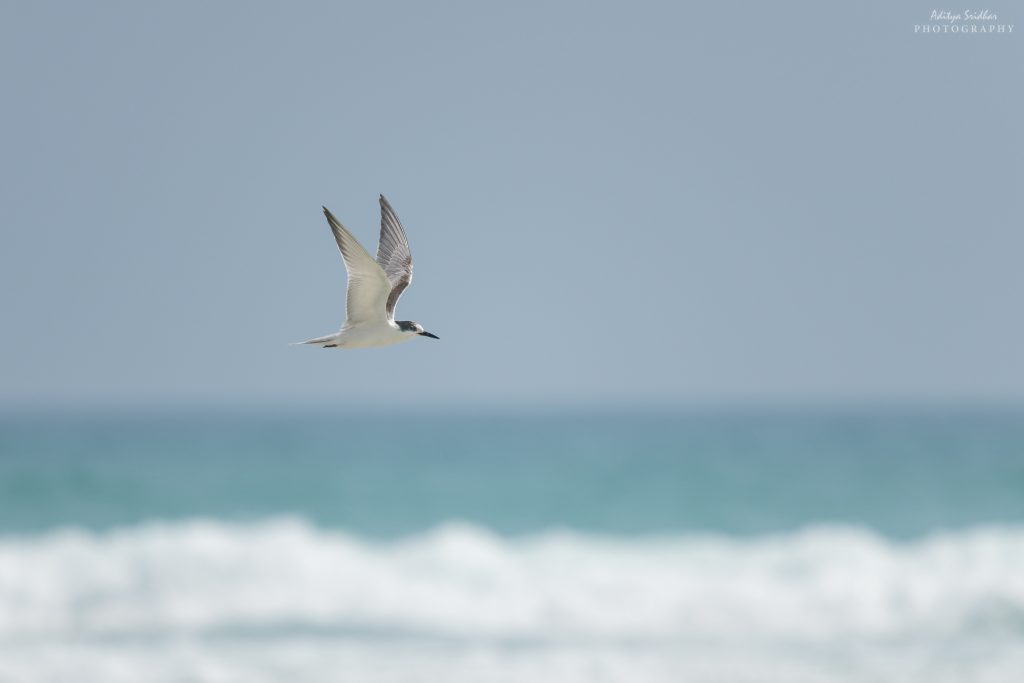
I was forced to retire to the comfort of my hotel room after the long and exhausting dolphin watching tour due to the high temperature and humidity in the afternoon. In the evening, my guide offered to show me a Frankincense plantation a few kilometers outside the city of Raysut. This is also where I managed to capture one of my personal favorite images of the trip.
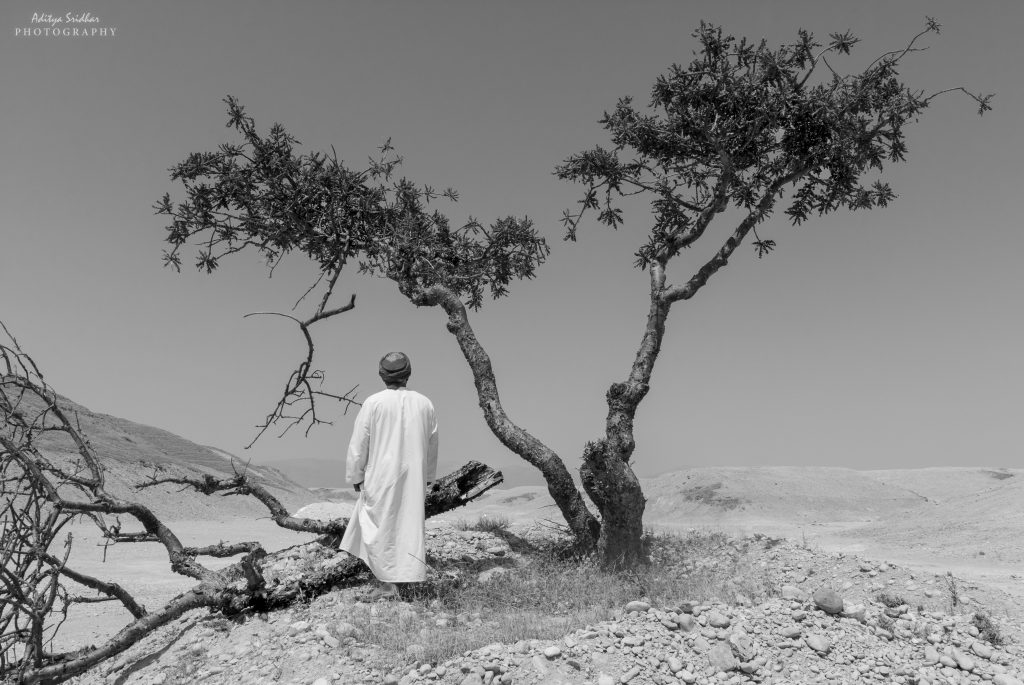
At the plantation, my guide (@m.b.a.almashani on Instagram) explained how the Frankincense resin is extracted from the trees and converted into products for sale. He also talked about how Tropical Cyclone ‘Luban’ (Arabic for Frankincense) affected the gum-bearing trees of the region. While a few trees survived, many were lost to the storm, such as the tree on the left.
After a brief stay at the plantation, I decided to call it a day, marking the end of my activities in Oman. What a trip it was! From the tall mountains to the stunning beaches, Salalah certainly did not disappoint in any way. I hope to visit the place again in the future, perhaps during the Khareef season, when the weather is said to be unlike any other place in the Middle East. But until then, it’s farewell to The Land of Frankincense.


